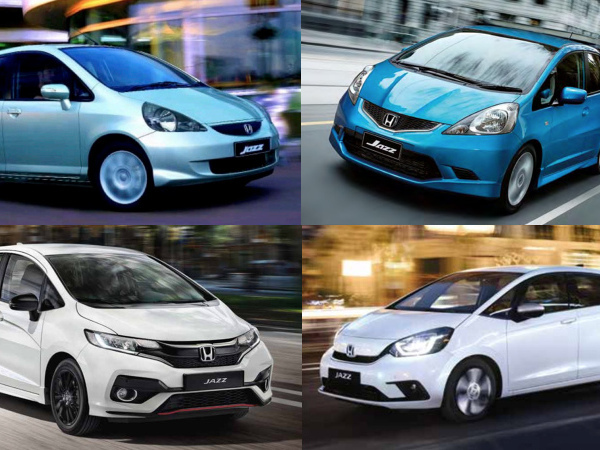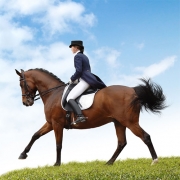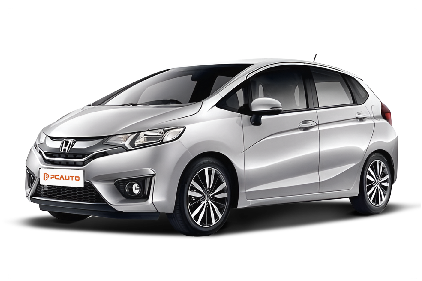Q
how to reset honda jazz bluetooth
To reset the Bluetooth system in your Honda Jazz, start by turning on the vehicle and making sure the infotainment screen is active. Navigate to the audio or settings menu and look for the "Bluetooth Device List" option. Select the paired device and hit "Delete" or "Unpair." Once that's done, turn off the ignition and wait about 30 seconds before restarting the car—your Bluetooth system will be reset and ready to pair with new devices. For Malaysian users facing Bluetooth connection issues, beyond resetting, check if your phone's operating system is up to date, as older Android or iOS versions can sometimes cause compatibility glitches. It's also a good idea to regularly clear the cache on your car's audio system; this simple step often improves Bluetooth stability. The Honda Jazz's Bluetooth setup is designed to be straightforward and user-friendly, with quick multi-device switching—perfect for hands-free calls during Malaysia's rainy drives. If problems persist after a reset, head to an authorized Honda Malaysia service center to have the audio module firmware checked for updates. Their technicians will use genuine diagnostic tools to fine-tune the system for better performance.
Special Disclaimer: This content is published by users and does not represent the views or position of PCauto.
Related Q&A
Q
What is the price of Honda Jazz in 2019?
Prices for the 2019 Honda Jazz in local markets vary by trim level. The base 1.5E manual starts around RM70,000, while the top-spec 1.5V Sensing CVT gets close to RM90,000 – exact figures might shift with dealer promotions or optional extras. It keeps Honda's classic practical design, packing a 1.5-liter i-VTEC engine with Earth Dreams tech that balances fuel efficiency with 131 hp, making it perfect for city drives. The standout feature? Jazz's iconic ULTRA seat system with its multiple folding setups – fold the rear seats down and you get a completely flat cargo area. That "magic seat" space concept still shines in its class. The 2019 model also added Honda SENSING on higher trims, bringing features like collision mitigation braking and lane keep assist – pretty advanced stuff for its segment back then. Looking at the used market, the 2019 Jazz holds value steadily. Well-maintained examples typically retain about 60-70% of their original price, thanks to its solid reliability reputation and affordable upkeep costs.
Q
What is the power of Honda Jazz 2019?
The 2019 Honda Jazz comes with a 1.5-liter i-VTEC naturally aspirated engine locally, churning out 120 horsepower (around 89 kW) and 145 Nm of peak torque. It's paired with either a CVT or a 6-speed manual gearbox, delivering smooth, fuel-efficient performance that's perfect for city driving. Built on Honda's classic global small car platform, the Jazz features lightweight construction combined with Earth Dreams technology, resulting in impressive fuel economy—around 5.5L/100km combined. What really stands out is its "Magic Seat" design; despite being a small car, the interior flexibility beats most rivals. Fold the rear seats flat, and you get a huge cargo area. Safety-wise, it gets VSA vehicle stability control, HSA hill-start assist, and higher trims even come with the Honda SENSING active safety suite. When stacked against competitors like the Toyota Yaris and Mazda2, the Jazz holds its own in power figures, but Honda's edge in space utilization and resale value is what keeps it a long-time favorite. If you crave more pep, keep an eye out for the later Jazz RS sport variant, which gets a more performance-focused tune.
Q
What is a 2019 Honda Jazz worth?
The used market price for the 2019 Honda Jazz typically ranges from RM50,000 to RM70,000, with the exact figure depending on factors like vehicle condition, mileage, trim level, and service history. The high-spec V trim or hybrid version can cost around 10% to 15% more than the base models. This car has always been popular in the used car market thanks to the reliability and fuel efficiency of its 1.5-liter i-VTEC engine, plus the flexible Ultra Seats design. It's recommended to check the vehicle's accident history and engine condition through Honda's official channels or third-party inspection agencies before purchasing. Also, note that the 2019 model belongs to the later production run of the third-generation Jazz, which saw improvements in sound insulation and suspension tuning compared to earlier versions. If your budget is tight, consider 2017-2018 models, which are RM10,000 to RM15,000 cheaper, but be aware that some of these might be approaching the 5-year mark and may require more replacement of wear-and-tear parts.
Q
What engine is in the 2019 Honda Jazz?
The 2019 Honda Jazz offers two engine options locally: 1.3-liter and 1.5-liter i-VTEC naturally aspirated gasoline engines. The 1.3-liter unit, coded L13B, delivers 98 horsepower and 127 Nm of torque, while the 1.5-liter (L15B) puts out 118 horsepower and 145 Nm. Both pair with a CVT transmission, balancing smoothness and fuel efficiency. Honda's i-VTEC tech smartly adjusts valve timing and lift to optimize power delivery and fuel economy across different RPM ranges, making it perfect for city driving. What's cool is the Jazz's front-engine, front-wheel-drive layout, combined with Honda's famous "MM Concept" (Maximizing Man Space, Minimizing Machine Space), which results in seriously impressive interior space utilization. In its class, the Jazz stands out for its proven, reliable engine tech, relatively low maintenance costs, and strong resale value—definitely a solid pick for buyers who prioritize practicality and economy. If you're craving more power, keep an eye out for the Jazz RS variant that came later; its 1.5-liter engine gets special tuning for even better performance.
Q
How much horsepower does a 2019 Honda Jazz have?
The 2019 Honda Jazz comes locally with a 1.5-liter i-VTEC naturally aspirated engine, churning out 120 horsepower and 145 Nm of peak torque, paired with a CVT transmission. It delivers smooth, fuel-efficient performance that's perfect for city driving. This car has gained popularity for its flexible interior space and reliability. Even though it's a naturally aspirated unit, the i-VTEC tech does a solid job balancing low-end torque and high-rev power, making it more than enough for daily use. If you want to know more about its performance, the chassis is tuned for comfort, with suspension that effectively soaks up road bumps. Meanwhile, the body rigidity is good, and cornering stability is above average for its class. Plus, the Magic Seat design makes the trunk space super versatile—great for families or anyone who needs to haul stuff regularly. Turbo engines are all the rage these days, but naturally aspirated ones like this Jazz's have lower maintenance costs and proven durability over time. For buyers on a budget or who prioritize practicality, this is a solid pick.
Q
What is the mileage of Honda Jazz 2019?
The 2019 Honda Jazz excels in fuel efficiency, with specific consumption figures varying by powertrain and driving conditions. The 1.5-liter i-VTEC gasoline engine variant delivers a combined fuel economy of approximately 5.5 to 6.0 liters per 100 kilometers, while the hybrid version (where available) achieves even lower fuel consumption. This car continues the Jazz lineup's legacy of flexible space and practicality; despite its compact exterior, the interior features clever design, and the Magic Seat system easily adapts to various cargo needs. In real-world use, fuel economy is influenced by road conditions, driving habits, and maintenance status. It's advisable to perform regular maintenance and check tire pressure to ensure optimal fuel efficiency. When considering a used Jazz, it's recommended to verify the actual mileage through complete service records and pay attention to the condition of key components like the engine and transmission. Among its peers, the Jazz consistently maintains good resale value and reliability, making it suitable for urban commuting and family daily use.
Q
What is the fuel consumption of Honda Jazz 2019?
The fuel efficiency of the 2019 Honda Jazz varies depending on the powertrain. The version equipped with the 1.5-liter i-VTEC naturally aspirated engine delivers an average combined fuel consumption of approximately 5.4 to 5.8 liters per 100 kilometers, while the Hybrid model achieves an even lower 4.5 to 4.8 liters per 100 kilometers. Actual figures may fluctuate based on driving habits, road conditions, and vehicle maintenance status. This car utilizes Honda's Earth Dreams technology, optimizing fuel economy through a lightweight body and efficient transmission system, making it ideal for city commuting. To further reduce fuel consumption, it is recommended to maintain a steady speed, avoid sudden acceleration and hard braking, and regularly replace the air filter and spark plugs. In the same class, models with similar fuel efficiency include the Toyota Yaris, but the Jazz is favored by many consumers for its flexible interior space and reliability. Notably, hybrid models can significantly save fuel in congested traffic through electric motor assistance, making them more economical in the long run.
Q
What is the fuel economy of Honda Jazz 2019?
The 2019 Honda Jazz delivers impressive fuel efficiency. Powered by a 1.5-liter i-VTEC engine paired with a CVT transmission, official figures put the combined fuel consumption at around 5.5 to 5.8 liters per 100 kilometers. Actual mileage can vary slightly depending on driving habits and road conditions—you might see a bit higher consumption in city driving, while highway cruising is more fuel-efficient. It features Honda's Earth Dreams technology, which optimizes combustion efficiency and power delivery, striking a good balance between peppy performance and fuel savings. As a small hatchback, the Jazz is popular for its nimble handling and efficient fuel economy, making it perfect for city commuting. If saving fuel is a priority, regular vehicle maintenance, keeping tires properly inflated, and adopting a smooth driving style are all simple tips that can help boost fuel efficiency even more. Among its peers, the Jazz sits in the upper-middle range for fuel economy, making it a solid pick for budget-conscious buyers looking to cut down on running costs.
Q
How much is the Honda Jazz 2019?
The 2019 Honda Jazz typically ranges from around RM50,000 to RM70,000 in the used car market. The exact price depends on factors like condition, mileage, trim level, and location, with higher-spec V variants or hybrid models usually costing more. This car is popular for its flexible interior space, reliable 1.5-liter i-VTEC engine, and fuel efficiency—perfect for city driving. It also holds its value pretty well among small cars. For a more accurate valuation, check local used car platforms or dealers for real-time prices. Don’t forget to inspect the service records and accident history too. The Jazz’s Magic Seats let you adjust the cargo space easily, making it great for families. Plus, some 2019 models come with the Honda Sensing safety suite, including collision warning and lane-keeping assist, which boosts driving safety. If you’re on a tighter budget, you could compare it to rivals like the 2019 Toyota Yaris or Mazda 2, but the Jazz still edges them out in practicality and brand reputation.
Q
How much is a 2019 Honda Jazz?
Used 2019 Honda Jazz models typically range in price from RM50,000 to RM70,000, with the exact figure depending on condition, mileage, trim level, and whether it's still under the original factory warranty. Higher-spec V trims or hybrid versions will command a bit more. This car is known for its clever space design and reliable 1.5-liter i-VTEC engine, delivering great fuel economy that's perfect for city driving. The Magic Seat system also makes hauling larger items a breeze. If you're looking at a used Jazz, make sure to check the service history and accident records to avoid major repair issues. Factory-certified pre-owned units often come with extended warranties, so they're worth prioritizing. Competitors like the Toyota Yaris or Mazda 2 are worth a look too, but the Jazz has always held steady in practicality and resale value, making it a top pick in the subcompact segment.
Popular Cars
Model Year
Car Compare
Car Photo
Latest Q&A
Q
How much did a new 2018 beetle cost?
The 2018 Volkswagen Beetle had a starting price range of approximately RM120,000 to RM180,000, depending on the trim and options. The entry-level 1.2 TSI Design model was the most affordable, while the top-spec 2.0 TSI R-Line version approached RM180,000—though final pricing could vary with optional extras and dealer promotions.
As a timeless classic, the 2018 Beetle kept its retro charm but packed modern tech like a touchscreen infotainment system and active safety features. Under the hood, buyers could choose between the fuel-efficient 1.2T or the more spirited 2.0T engine.
Fair warning: Volkswagen discontinued the Beetle in 2019, so you’ll only find it on the used market now. That said, its iconic design and nostalgic appeal still make it a hit among collectors. If you’re eyeing a pre-owned model, always check the vehicle history and maintenance records to snag a solid deal.
Q
What engine does a 2018 VW Beetle have?
The 2018 Volkswagen Beetle offered two gasoline engine options across different markets. The primary powerplant was a 1.2-liter TSI turbocharged inline-four, delivering 105 horsepower and 175 Nm of torque, paired with a 7-speed DSG dual-clutch transmission. This compact forced-induction engine struck a balance between urban fuel efficiency and strong low-end torque.
Higher-spec variants featured an optional 1.4-liter TSI turbocharged unit, bumping output to 150 horsepower. Both engines adopted direct fuel injection and belonged to VW’s widely used EA211 modular family, featuring modern tech like lightweight aluminum blocks.
Though retaining its iconic silhouette, this generation Beetle actually shared its underpinnings with the Golf, inheriting the brand’s proven front-wheel-drive architecture. This platform commonality also translated to easier maintenance, as local dealerships were well-versed in servicing these powertrains thanks to extensive parts sharing across VW’s lineup.
Q
What are the different models of the 2018 VW Beetle?
The 2018 Volkswagen Beetle comes in three main trims: Classic, Trendline, and Sport. All models are powered by a 1.2-liter TSI turbocharged engine delivering 105 horsepower, paired with a 7-speed DSG dual-clutch transmission—perfect for city driving with its nimble handling and solid fuel efficiency.
The entry-level Classic trim rolls on 16-inch wheels and features a basic multimedia system. Stepping up to the Trendline adds 17-inch wheels, fog lights, and chrome accents. The Sport trim leans into its name with 18-inch wheels, a sport-tuned suspension, and unique interior color options.
This generation keeps the Beetle’s iconic retro curves but modernizes them with touches like LED daytime running lights. Inside, you’ll find color-matched dash panels, and with 310 liters of trunk space, it’s more practical than most small cars in its class.
Since the Beetline was discontinued in 2019, the 2018 model stands as the last new generation, making it a rising collector’s item—especially the convertible, which holds strong appeal in the used market. For maintenance, stick to routine service every 15,000 km or 12 months, and regular 95-octane fuel is all it needs.
Q
Does the 2018 Beetle have Apple CarPlay?
The 2018 Volkswagen Beetle did come equipped with Apple CarPlay, integrated into its Composition Media infotainment system. This allowed iPhone users to seamlessly connect for navigation, music, and other apps. The system also supported Android Auto, catering to different smartphone users with its intuitive and responsive interface—definitely a plus for convenience on the road.
That said, some early-production 2018 models might require a software update to activate the feature, so it’s worth checking with an official dealer to confirm your car’s specs or available upgrades. Also, wireless Apple CarPlay wasn’t standard across all trims; it depended on the factory-installed options.
For fans of classic styling who still want modern tech, the Beetle struck a nice balance between retro charm and everyday usability. Competitors like the Mini Cooper offered similar connectivity, but let’s be honest—the Beetle’s iconic design was always its standout feature.
Q
What is the fuel economy of the 2018 Beetle?
The 2018 Volkswagen Beetle's fuel efficiency varies by powertrain. The 1.2L TSI turbocharged version delivers a combined fuel consumption of around 5.5L/100km, while the 1.4L TSI model is slightly thirstier at approximately 6.0L/100km – both perform best with 95-octane petrol.
You'll likely see higher consumption in city driving, but it cruises efficiently on highways thanks to its classic aerodynamic design. For better mileage, stick to routine maintenance like cleaning the air filter and keeping tyres properly inflated. These small habits can help squeeze out extra kilometres per litre.
Though discontinued, the 2018 Beetle remains popular in the used car market – its iconic styling and decent fuel economy make it a practical daily driver. Just remember real-world figures depend heavily on driving style and road conditions, so check owner forums for real-life feedback.
View MoreRelated News

Auto Arena: Which generation of Honda Jazz (Fit) is your favorite?
LienMay 21, 2024

Honda and Red Bull's eight-year partnership comes to an end. Honda will start a collaboration with Aston Martin.
JamesDec 10, 2025

Additional features without extra cost! Honda City RS series upgraded, equipped with a 360° Surround View Camera System
Kevin WongDec 9, 2025

A brand new Honda Prelude is expected to arrive in Malaysia by 2026, featuring the same hybrid system as the Civic.
MichaelDec 8, 2025

Honda Prelude priced as high as $42,000, which makes me nostalgic for the old Prelude
JamesNov 20, 2025
View More













 Cars
Cars




Pros
Cons